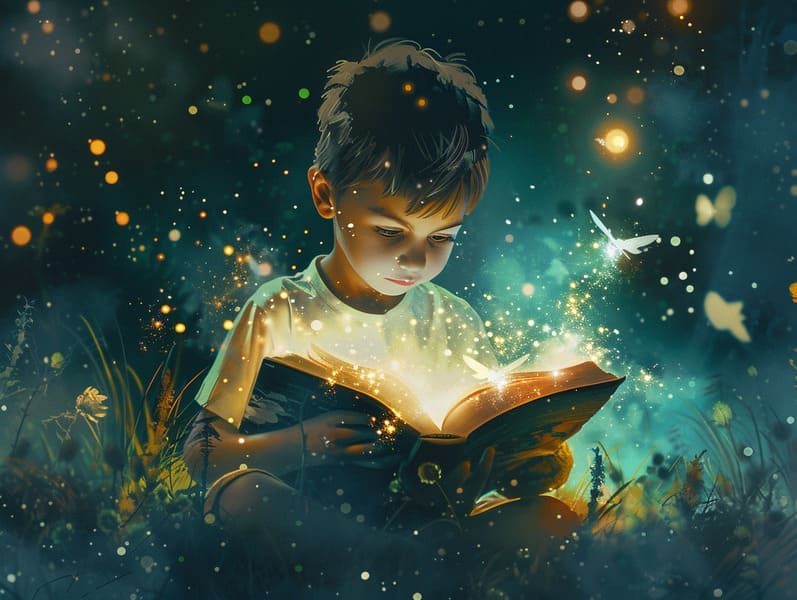The Birth of Bedtime Fairy Tales with Its Steadfast Splendor.
The Birth of Bedtime Fairy Tales with Its Steadfast Splendor.
Blog Article

Short fairy tales have legendary status. These tales have been conveyed from one generation to the next well before they were ever put on paper. They came from a variety of civilizations, including Asian traditions. They were initially narrated among grown-ups, often carrying themes and messages aligned with the societal norms and beliefs of the time.
Jacob and Wilhelm Grimm, Jacob and Wilhelm, were among the first to compile many of these beloved stories. Their anthology, "Grimm's Fairy Stories," included stories like "The Story of Cinderella," "Hansel and Grethel," and "Snow-White and Rose-Red," which have since become classics in the world of traditional fairy tales. Similarly, the Danish author's magical narratives, such as "The Mermaid's Tale," and "The Duckling that Could," have captivated hearts worldwide, guaranteeing their place in the pantheon of famous fairy tales.
Though they are centuries old, these stories remain as relevant as ever, especially as children's night stories. These whimsical stories are now available in various formats, including beautifully illustrated books, whimsical animations, and internet fairy tales.
Their persistent charm can be ascribed to several whimsical characteristics:
Life Lessons: Classic fairy tales often provide important moral lessons. Fairy tales like "The Boy Who Cried Wolf" teach the merit of being truthful, while "The Tale of the Tortoise and the Hare" emphasize the merits of tenacity and meekness. These tales offer little ones clear distinctions between correct and incorrect, guiding their moral compass in a kind yet important way.
Compassion and Insight: Ancient fairy tales frequently include personalities facing challenges and problems, stimulating listeners to identify with their struggles and boost their triumphs. For instance, "Beauty's Beast" illustrates the importance of seeing beyond looks to realize the inner self of a person, promoting tenderness and insight.
Cultural Recognition: Many traditional fairy tales are infused with the cultural contexts from which they blossomed. Delving into these fairy tales can provide informative snapshots into different backgrounds, promoting a sense of cultural awareness and comprehension.
Inventiveness and Fantasy: The fantasy-filled elements in fairy tales—enchanted forests—stimulate children’s fantasies. These tales guide readers to enchanted realms, fostering creative thinking and a sense of curiosity that continues a lifetime.
Classic fairy tales are not only mesmerizing but also didactic. They act as fascinating tools in strengthening various brain and heart skills in the young. When old fairy tales are voiced, they nurture language development by bringing new vocabulary and elaborate sentence structures. This practice also develops auditory perception and focus, as young ones focus on every detail, eager to see what happens next.
Furthermore, debating the themes and characters of fairy tales can strengthen analytical skills and analytical skills. Children are taught to recognize patterns, forecast, and understand cause and effect. These talks also assist children voice their thoughts and feelings, contributing to their emotional intelligence.
In today’s technological age, the presence of free fairy tales online has made these narratives more within reach than ever. Internet resources and programs make available broad selections of classic fairy tales that can be experienced or listened through anytime, anywhere. Fairy tales voiced are particularly favored, providing an fascinating method for young ones to engage with these alluring stories. Sound books and voiced videos take characters and settings to life, often accompanied by spellbinding music and music that improve the narrative adventure.
The timeless charm of classic fairy tales lies in their ability to adjust to modern times while keeping their central messages. Contemporary renditions of these fairy tales often include more inclusive protagonists and modern settings, making them relatable to today’s audience. However, the key lessons of braveness, generosity, and fair-mindedness remain unchanged, continuing to connect with readers of all ages.
Old fairy tales also offer a sense of contentment and closeness. They impart a well-arranged narrative with a distinct beginning, middle, and end, often closing with the conclusion of conflicts and the triumph of morality over wickedness. This regularity can be solacing for the young, making available a sense of steadfastness in an constantly changing world.
Old fairy tales continue to mesmerize and guide new generations, maintaining their elegance and pertinence in modern society. As children's night stories, they bestow a perfect blend of charm and understanding, nourishing moral values, empathy, and creativity. The accessibility of online fairy tales and the widespread nature of fairy tales narrated promise that these old stories remain acquirable to new generations.
By protecting and imparting these fairy tales, we continue to value the rich tapestry of fables and cultural heritage. Whether you are seeing a beautifully illustrated book, browsing a digital collection, or listening on an read-aloud book, the beauty of bedtime fairy tales is always within reach. These narratives point out of the everlasting magic of fairy tales and its ability to unite us across epochs and places.
Even if you are more info experiencing a vividly illustrated book, accessing a virtual collection, or hearing an audio story, the majesty of old fairy tales is always within reach.
These tales illustrate of the lasting influence of narratives and its ability to bring us together across epochs and places, casting a charm that delights and instructs alike.